DISASTER PLAN ATAT THE FIELD LEVEL Martial Ledecq






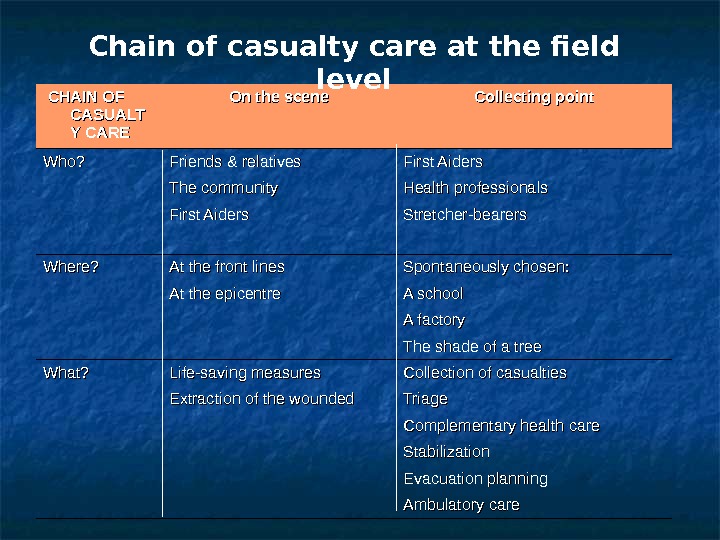
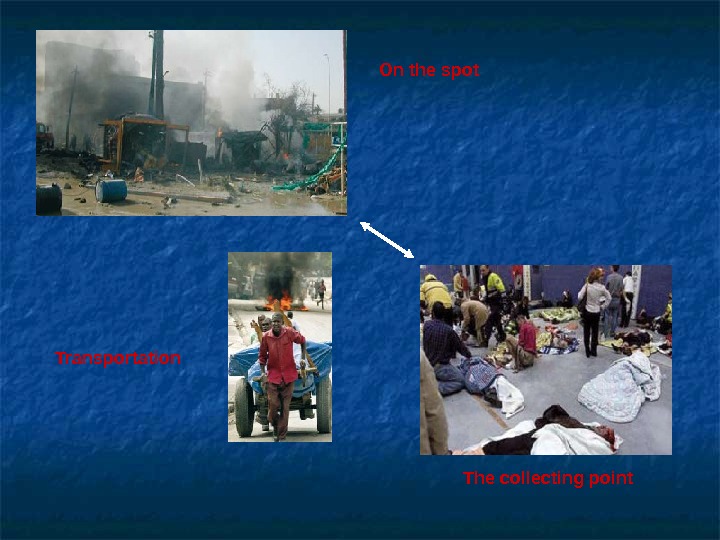
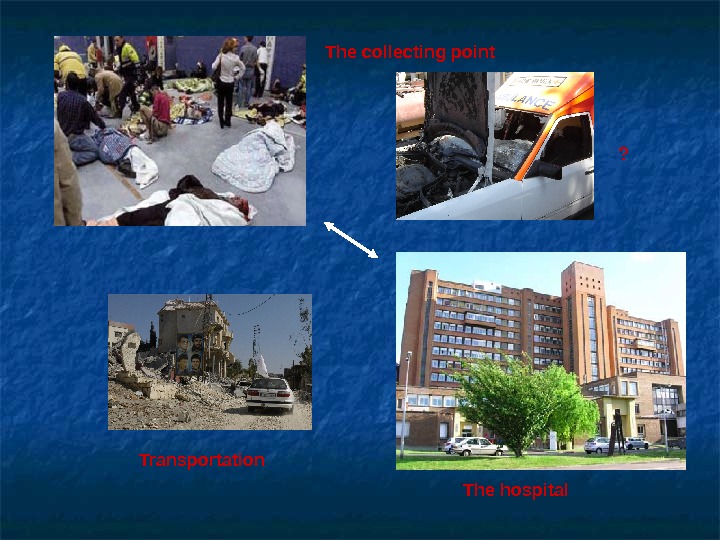
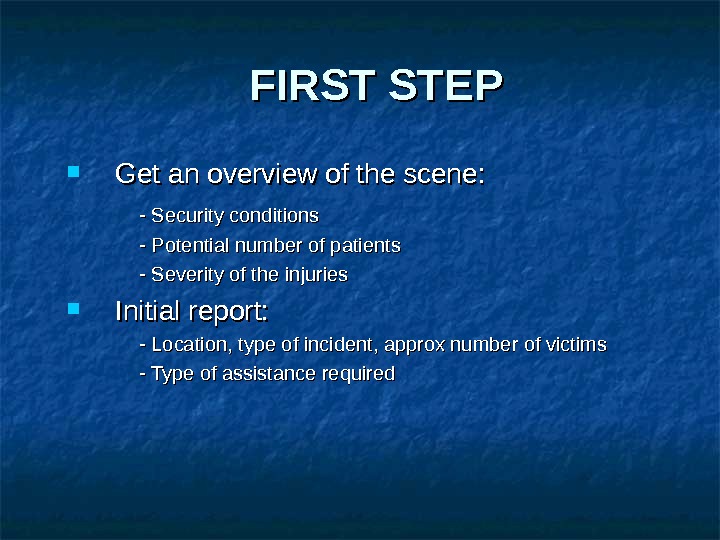
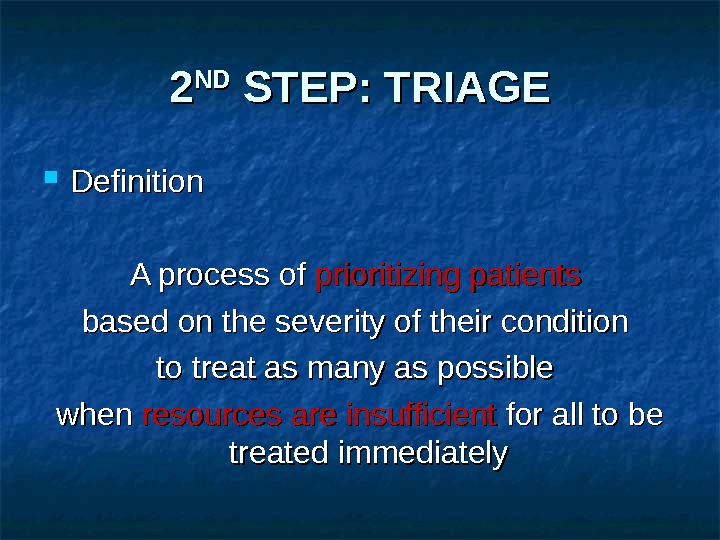


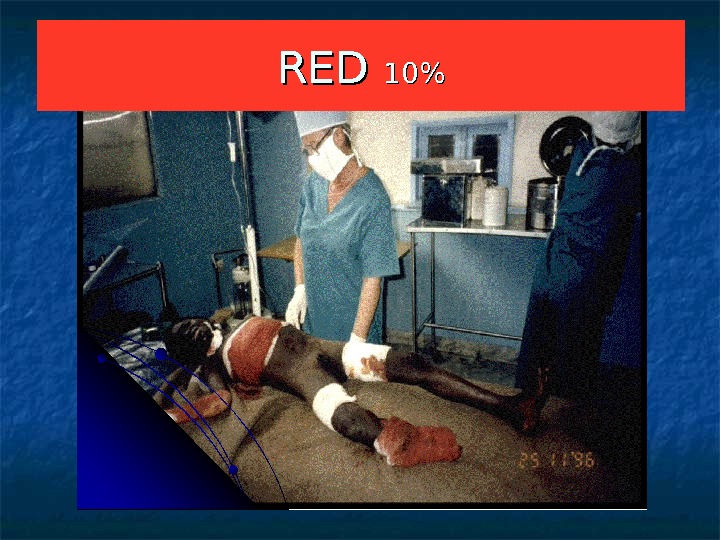
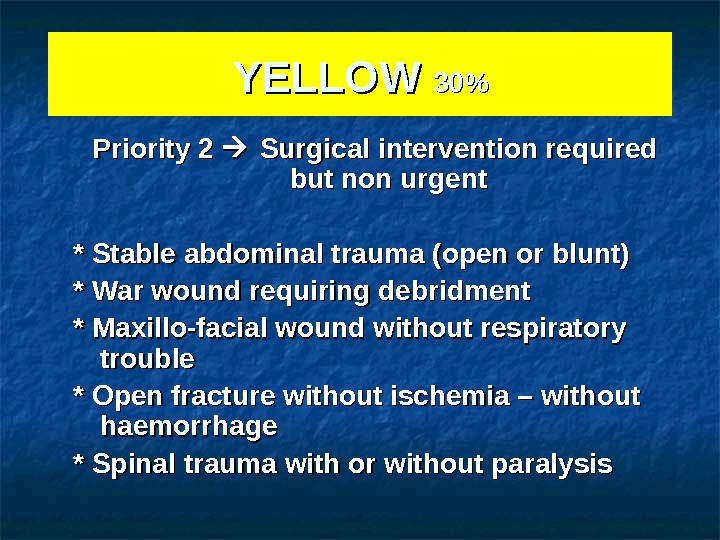
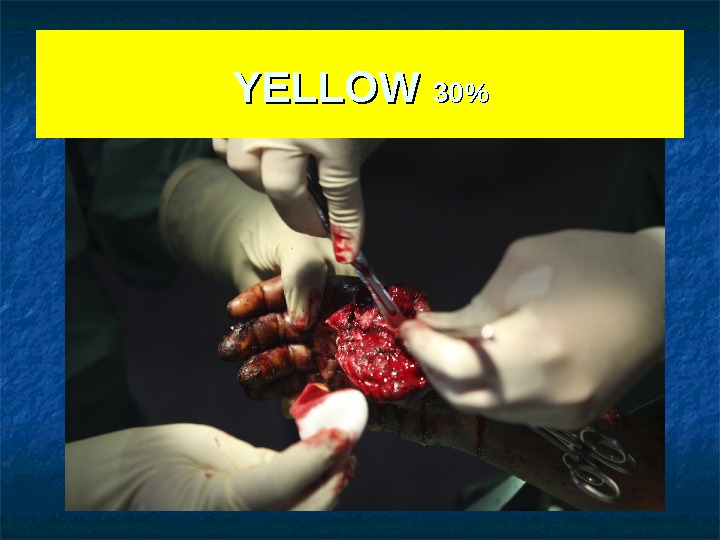

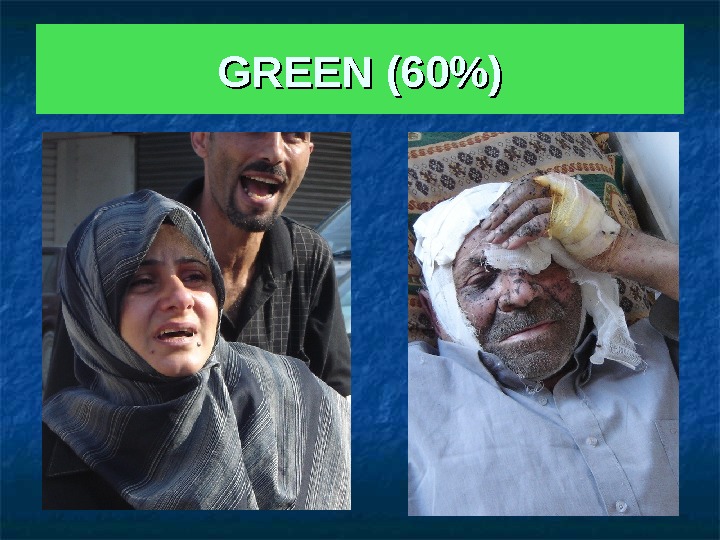

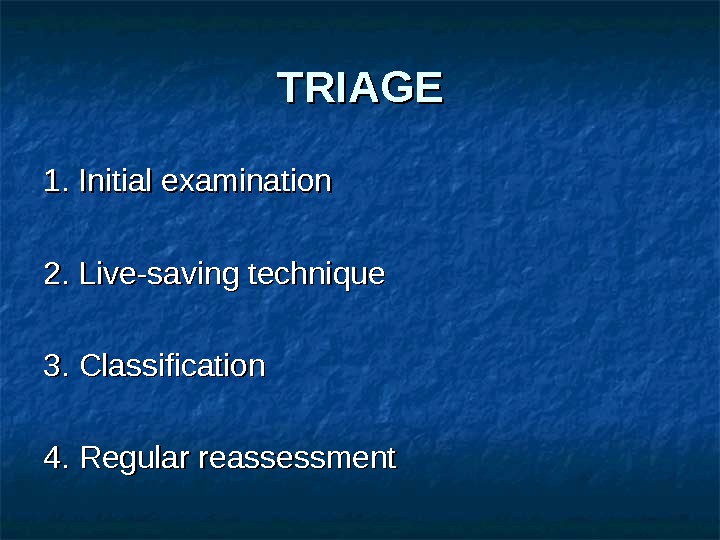



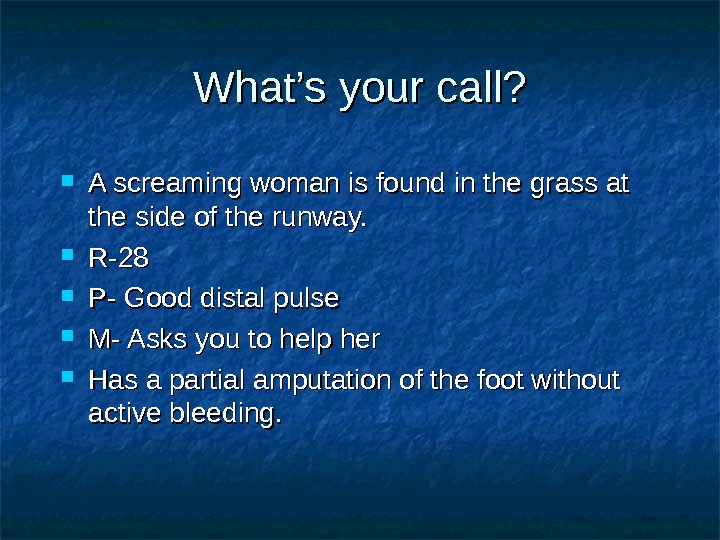

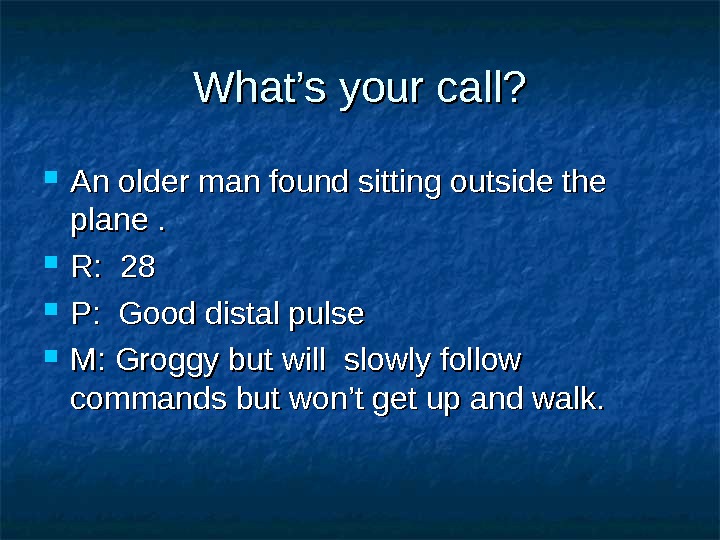
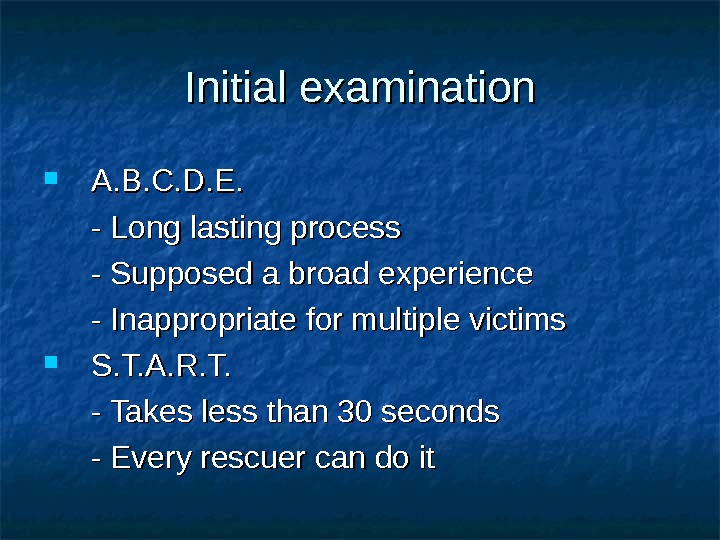
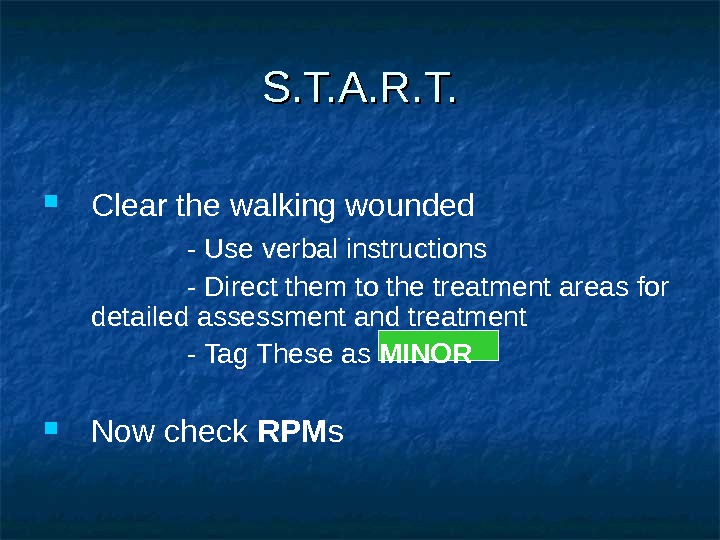

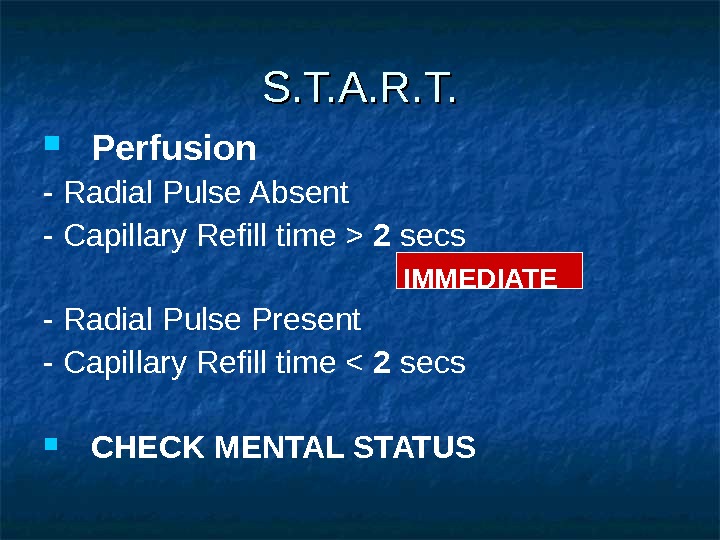
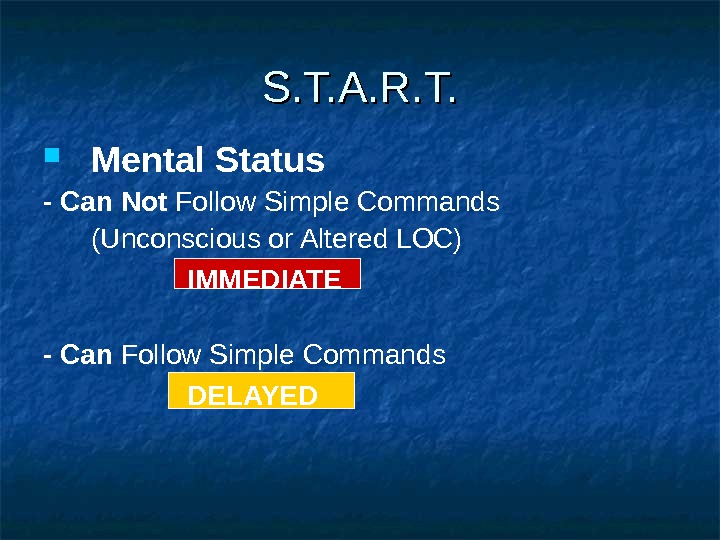

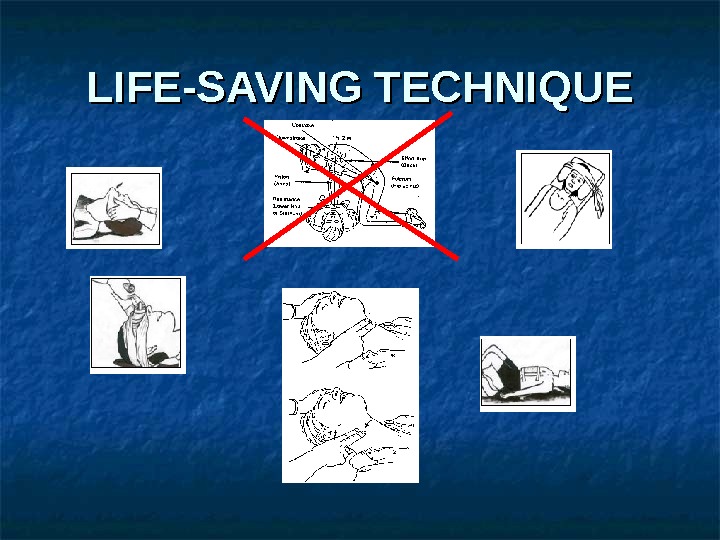
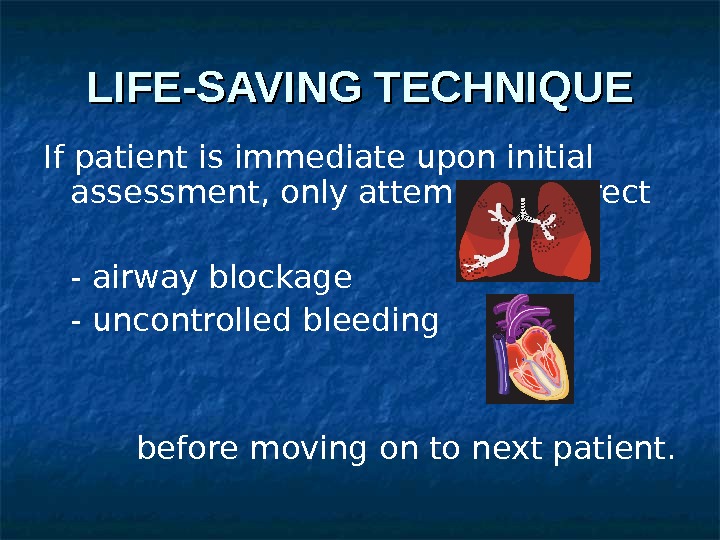
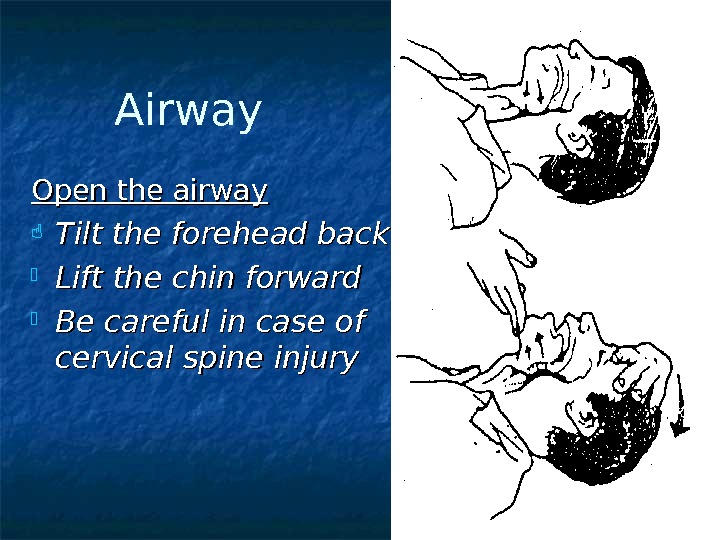


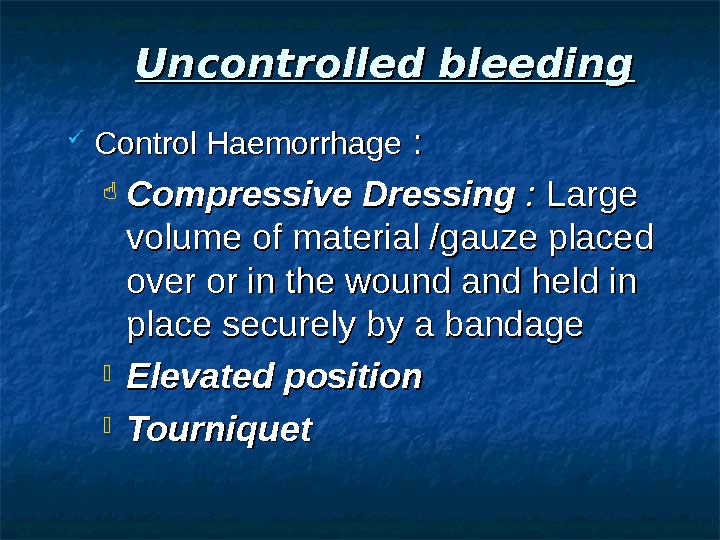


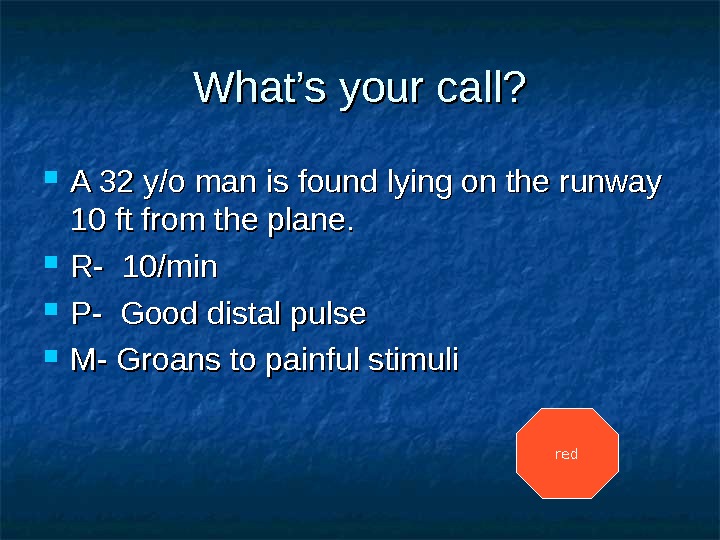
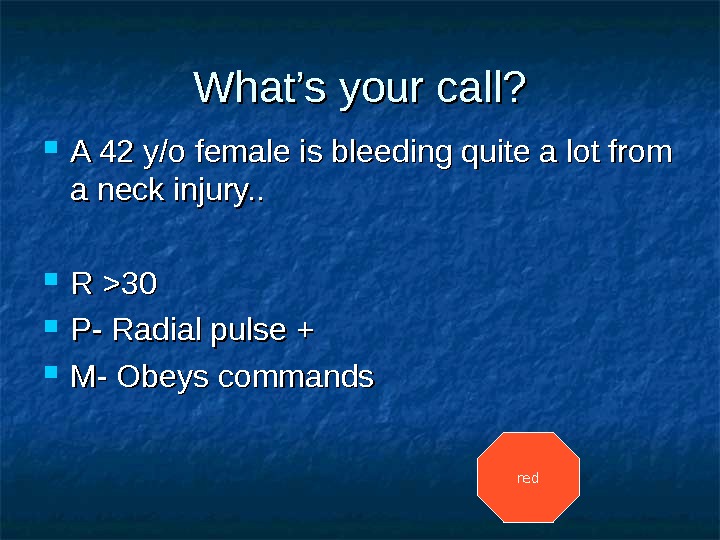
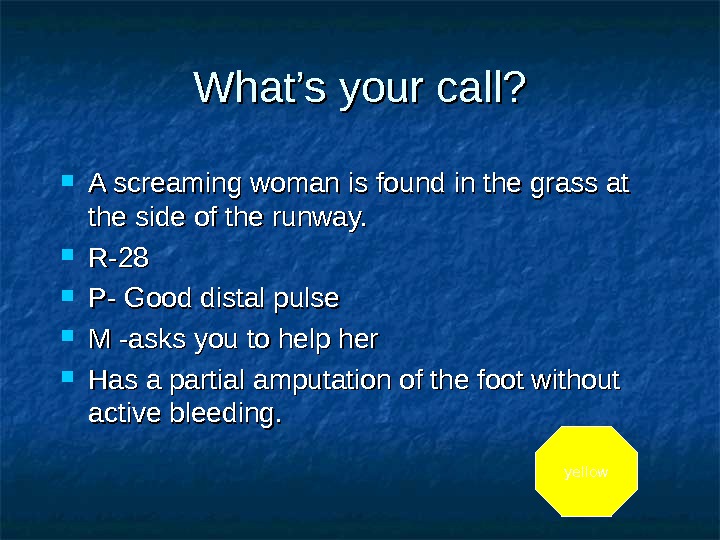
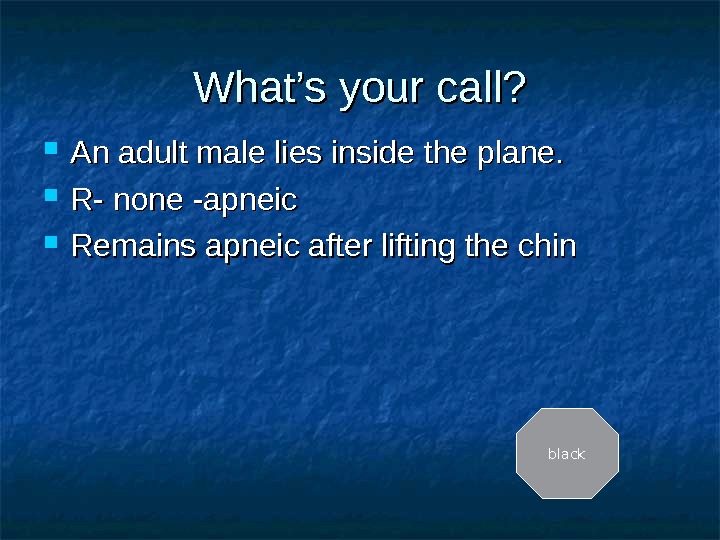


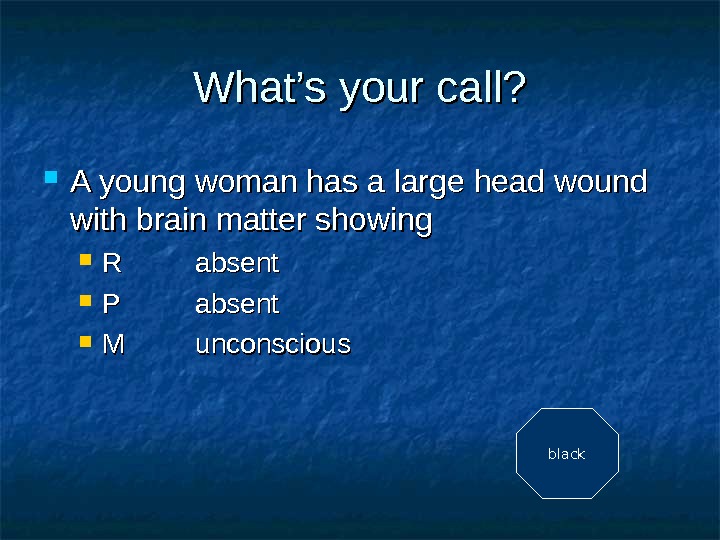
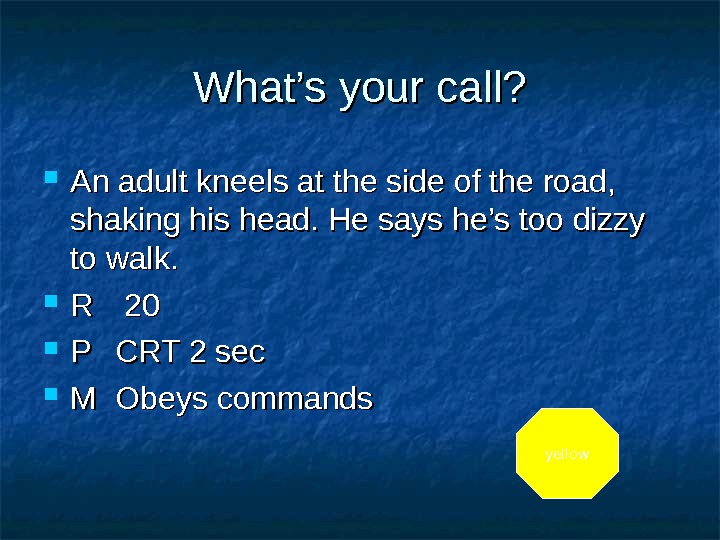

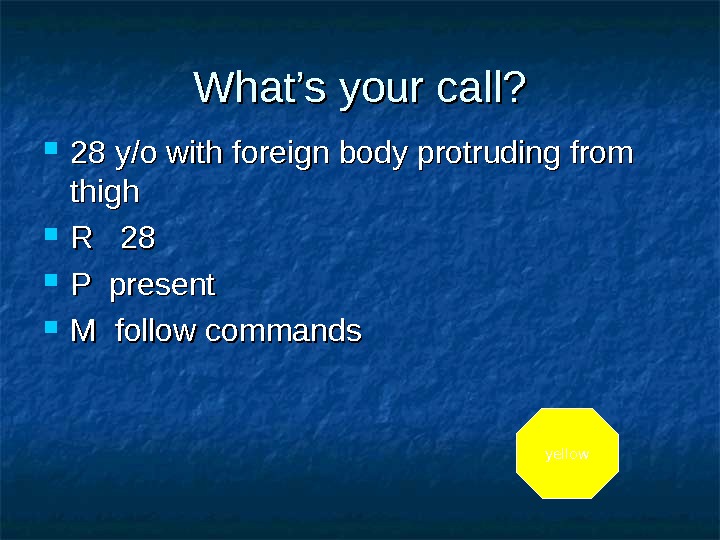
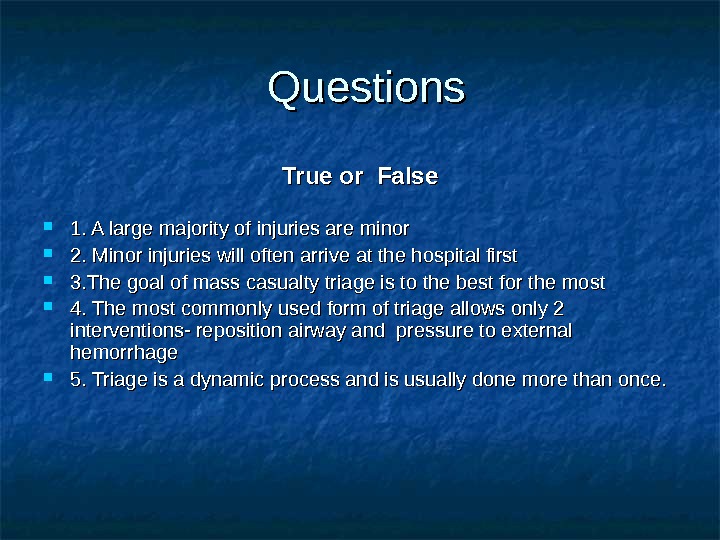
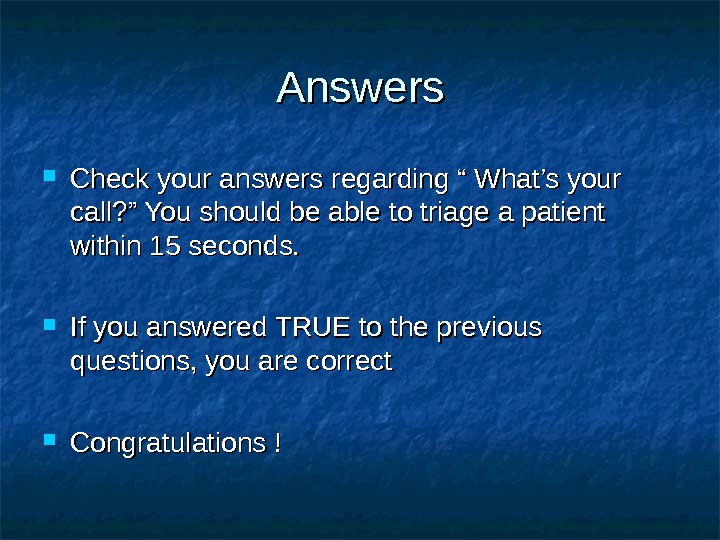
- Размер: 33.1 Mегабайта
- Количество слайдов: 51
Описание презентации DISASTER PLAN ATAT THE FIELD LEVEL Martial Ledecq по слайдам
 DISASTER PLAN ATAT THE FIELD LEVEL Martial Ledecq
DISASTER PLAN ATAT THE FIELD LEVEL Martial Ledecq
 DISASTER Event which generates more patients at one time than locally available resources can manage using routine procedures. It requires exceptional emergency arrangements and additional or extraordinary assistance. .
DISASTER Event which generates more patients at one time than locally available resources can manage using routine procedures. It requires exceptional emergency arrangements and additional or extraordinary assistance. .
 Examples Plane crash Traffic accident Flooding Forest fire Armed conflict Civil war Bomb attack Earthquake
Examples Plane crash Traffic accident Flooding Forest fire Armed conflict Civil war Bomb attack Earthquake
 THE CHAIN OF CASUALTY CARE The path followed by a casualty from the point of injury all the way to specialized care as his condition dictates:
THE CHAIN OF CASUALTY CARE The path followed by a casualty from the point of injury all the way to specialized care as his condition dictates:
 THE CHAIN OF CASUALTY CARE 1. on the scene 2. collecting point 3. surgical hospital 4. specialized centre (including rehabilitation) 5. a transport system (e. g. ambulances) for evacuation from one level to another. 6. A coordination centre
THE CHAIN OF CASUALTY CARE 1. on the scene 2. collecting point 3. surgical hospital 4. specialized centre (including rehabilitation) 5. a transport system (e. g. ambulances) for evacuation from one level to another. 6. A coordination centre
 CHAIN OF CASUALT Y CARE On the scene Collecting point Who? Friends & relatives First Aiders The community Health professionals First Aiders Stretcher-bearers Where? At the front lines Spontaneously chosen: At the epicentre A school A factory The shade of a tree What? Life-saving measures Collection of casualties Extraction of the wounded Triage Complementary health care Stabilization Evacuation planning Ambulatory care. Chain of casualty care at the field level
CHAIN OF CASUALT Y CARE On the scene Collecting point Who? Friends & relatives First Aiders The community Health professionals First Aiders Stretcher-bearers Where? At the front lines Spontaneously chosen: At the epicentre A school A factory The shade of a tree What? Life-saving measures Collection of casualties Extraction of the wounded Triage Complementary health care Stabilization Evacuation planning Ambulatory care. Chain of casualty care at the field level
 On the spot The collecting point. Transportation
On the spot The collecting point. Transportation
 The collecting point The hospital. Transportation ?
The collecting point The hospital. Transportation ?
 FIRST STEP Get an overview of the scene: — Security conditions — Potential number of patients — Severity of the injuries Initial report: — Location, type of incident, approx number of victims — Type of assistance required
FIRST STEP Get an overview of the scene: — Security conditions — Potential number of patients — Severity of the injuries Initial report: — Location, type of incident, approx number of victims — Type of assistance required
 22 NDND STEP: TRIAGE Definition A process of prioritizing patients based on the severity of their condition to treat as many as possible when resources are insufficient for all to be treated immediately
22 NDND STEP: TRIAGE Definition A process of prioritizing patients based on the severity of their condition to treat as many as possible when resources are insufficient for all to be treated immediately
 CLASSIFICATION
CLASSIFICATION
 RED 10%10% Priority 1 Good chance of survival if immediate surgical intervention * Thoracic trauma and respiratory distress * Abdominal trauma and shock * Open fracture with active bleeding * Incomplete amputation, vascular damage with ischemia * Burns 2 ndnd — 3 degree 15 to 50% TBS
RED 10%10% Priority 1 Good chance of survival if immediate surgical intervention * Thoracic trauma and respiratory distress * Abdominal trauma and shock * Open fracture with active bleeding * Incomplete amputation, vascular damage with ischemia * Burns 2 ndnd — 3 degree 15 to 50% TBS
 RED 10%10%
RED 10%10%
 YELLOW 30%30% Priority 2 Surgical intervention required but non urgent * Stable abdominal trauma (open or blunt) * War wound requiring debridment * Maxillo-facial wound without respiratory trouble * Open fracture without ischemia – without haemorrhage * Spinal trauma with or without paralysis
YELLOW 30%30% Priority 2 Surgical intervention required but non urgent * Stable abdominal trauma (open or blunt) * War wound requiring debridment * Maxillo-facial wound without respiratory trouble * Open fracture without ischemia – without haemorrhage * Spinal trauma with or without paralysis
 YELLOW 30%30%
YELLOW 30%30%
 GREEN 60%60% No surgical intervention required * Superficial or minor wound * Burns < 15% TBS * Sprains, … * Psychological trauma
GREEN 60%60% No surgical intervention required * Superficial or minor wound * Burns < 15% TBS * Sprains, … * Psychological trauma
 GREEN (60%)
GREEN (60%)
 GREEN (60%)
GREEN (60%)
 TRIAGE 1. Initial examination 2. Live-saving technique 3. Classification 4. Regular reassessment
TRIAGE 1. Initial examination 2. Live-saving technique 3. Classification 4. Regular reassessment
 What’s your call Triage Assessment Exercise A plane has crashed at BEIRUT Airport. There are many causalities. A call has been made for an MCI alert. You are asked to assist with triage
What’s your call Triage Assessment Exercise A plane has crashed at BEIRUT Airport. There are many causalities. A call has been made for an MCI alert. You are asked to assist with triage
 What’s your call? A 32 y/o man is found lying on the runway 10 m from the plane. R- 10/min P- Good distal pulse M- Groans to painful stimuli
What’s your call? A 32 y/o man is found lying on the runway 10 m from the plane. R- 10/min P- Good distal pulse M- Groans to painful stimuli
 What’s your call? A 42 y/o female is bleeding quite a lot from a neck injury. . R >30 P- Radial pulse + M- Obeys commands
What’s your call? A 42 y/o female is bleeding quite a lot from a neck injury. . R >30 P- Radial pulse + M- Obeys commands
 What’s your call? A screaming woman is found in the grass at the side of the runway. R-28 P- Good distal pulse M- Asks you to help her Has a partial amputation of the foot without active bleeding.
What’s your call? A screaming woman is found in the grass at the side of the runway. R-28 P- Good distal pulse M- Asks you to help her Has a partial amputation of the foot without active bleeding.
 What’s your call? An adult male lies inside the plane. R- none -apneic Remains apneic after lifting the chin
What’s your call? An adult male lies inside the plane. R- none -apneic Remains apneic after lifting the chin
 What’s your call? An older man found sitting outside the plane. R: 28 P: Good distal pulse M: Groggy but will slowly follow commands but won’t get up and walk.
What’s your call? An older man found sitting outside the plane. R: 28 P: Good distal pulse M: Groggy but will slowly follow commands but won’t get up and walk.
 Initial examination A. B. C. D. E. — Long lasting process — Supposed a broad experience — Inappropriate for multiple victims S. T. A. R. T. — Takes less than 30 seconds — Every rescuer can do it
Initial examination A. B. C. D. E. — Long lasting process — Supposed a broad experience — Inappropriate for multiple victims S. T. A. R. T. — Takes less than 30 seconds — Every rescuer can do it
 S. T. A. R. T. Clear the walking wounded — Use verbal instructions — Direct them to the treatment areas for detailed assessment and treatment — Tag These as MINOR Now check RPM s
S. T. A. R. T. Clear the walking wounded — Use verbal instructions — Direct them to the treatment areas for detailed assessment and treatment — Tag These as MINOR Now check RPM s
 Respiration ’ s — None? Open the Airway — Still None? DECEASED — Restored? IMMEDIATE — Present? — Above 30 (or < 10) IMMEDIATE — Below 30 CHECK PERFUSION S. T. A. R. T.
Respiration ’ s — None? Open the Airway — Still None? DECEASED — Restored? IMMEDIATE — Present? — Above 30 (or < 10) IMMEDIATE — Below 30 CHECK PERFUSION S. T. A. R. T.
 Perfusion — Radial Pulse Absent — Capillary Refill time > 2 secs IMMEDIATE — Radial Pulse Present — Capillary Refill time < 2 secs CHECK MENTAL STATUS S. T. A. R. T.
Perfusion — Radial Pulse Absent — Capillary Refill time > 2 secs IMMEDIATE — Radial Pulse Present — Capillary Refill time < 2 secs CHECK MENTAL STATUS S. T. A. R. T.
 Mental Status — Can Not Follow Simple Commands (Unconscious or Altered LOC) IMMEDIATE — Can Follow Simple Commands DELAYED S. T. A. R. T.
Mental Status — Can Not Follow Simple Commands (Unconscious or Altered LOC) IMMEDIATE — Can Follow Simple Commands DELAYED S. T. A. R. T.
 S. T. A. R. T.
S. T. A. R. T.
 LIFE-SAVING TECHNIQU
LIFE-SAVING TECHNIQU
 LIFE-SAVING TECHNIQUE If patient is immediate upon initial assessment, only attempt to correct — airway blockage — uncontrolled bleeding before moving on to next patient.
LIFE-SAVING TECHNIQUE If patient is immediate upon initial assessment, only attempt to correct — airway blockage — uncontrolled bleeding before moving on to next patient.
 Airway Open the airway Tilt the forehead back Lift the chin forward Be careful in case of cervical spine injury
Airway Open the airway Tilt the forehead back Lift the chin forward Be careful in case of cervical spine injury
 Airway 2. Remove all objects/obstructions from the mouth
Airway 2. Remove all objects/obstructions from the mouth
 You can HH ear it SS ee it FF eel it. Breathing
You can HH ear it SS ee it FF eel it. Breathing
 Uncontrolled bleeding Control Haemorrhage : : Compressive Dressing : : Large volume of material /gauze placed over or in the wound and held in place securely by a bandage Elevated position Tourniquet
Uncontrolled bleeding Control Haemorrhage : : Compressive Dressing : : Large volume of material /gauze placed over or in the wound and held in place securely by a bandage Elevated position Tourniquet
 The triage card
The triage card
 Respiration restored? Haemorrhage controlled? Patient is tagged? Dispatch immediately to the appropriate zone
Respiration restored? Haemorrhage controlled? Patient is tagged? Dispatch immediately to the appropriate zone
 What’s your call? A 32 y/o man is found lying on the runway 10 ft from the plane. R- 10/min P- Good distal pulse M- Groans to painful stimuli red
What’s your call? A 32 y/o man is found lying on the runway 10 ft from the plane. R- 10/min P- Good distal pulse M- Groans to painful stimuli red
 What’s your call? A 42 y/o female is bleeding quite a lot from a neck injury. . R >30 P- Radial pulse + M- Obeys commands red
What’s your call? A 42 y/o female is bleeding quite a lot from a neck injury. . R >30 P- Radial pulse + M- Obeys commands red
 What’s your call? A screaming woman is found in the grass at the side of the runway. R-28 P- Good distal pulse M -asks you to help her Has a partial amputation of the foot without active bleeding. yellow
What’s your call? A screaming woman is found in the grass at the side of the runway. R-28 P- Good distal pulse M -asks you to help her Has a partial amputation of the foot without active bleeding. yellow
 What’s your call? An adult male lies inside the plane. R- none -apneic Remains apneic after lifting the chin black
What’s your call? An adult male lies inside the plane. R- none -apneic Remains apneic after lifting the chin black
 What’s your call? An older man found sitting outside the plane. R: 28 P: Good distal pulse M: Groggy but will slowly follow commands but won’t get up and walk. yellow
What’s your call? An older man found sitting outside the plane. R: 28 P: Good distal pulse M: Groggy but will slowly follow commands but won’t get up and walk. yellow
 What’s your call? An adult male lies on the ground RR 20 20 PP Good distal pulse MM Obeys commands but cries that he can’t move his legs yellow
What’s your call? An adult male lies on the ground RR 20 20 PP Good distal pulse MM Obeys commands but cries that he can’t move his legs yellow
 What’s your call? A young woman has a large head wound with brain matter showing RR absent PP absent MM unconscious black
What’s your call? A young woman has a large head wound with brain matter showing RR absent PP absent MM unconscious black
 What’s your call? An adult kneels at the side of the road, shaking his head. He says he’s too dizzy to walk. RR 20 20 PP CRT 2 sec MM Obeys commands yellow
What’s your call? An adult kneels at the side of the road, shaking his head. He says he’s too dizzy to walk. RR 20 20 PP CRT 2 sec MM Obeys commands yellow
 What’s your call? 30 y/o male with shrapnel in chest, short of breath, dusky and can’t walk RR 36 36 PP radial pulse present capillary refill < 2 sec MM confused red
What’s your call? 30 y/o male with shrapnel in chest, short of breath, dusky and can’t walk RR 36 36 PP radial pulse present capillary refill < 2 sec MM confused red
 What’s your call? 28 y/o with foreign body protruding from thigh R 28 P present M follow commands yellow
What’s your call? 28 y/o with foreign body protruding from thigh R 28 P present M follow commands yellow
 Questions True or False 1. A large majority of injuries are minor 2. Minor injuries will often arrive at the hospital first 3. The goal of mass casualty triage is to the best for the most 4. The most commonly used form of triage allows only 2 interventions- reposition airway and pressure to external hemorrhage 5. Triage is a dynamic process and is usually done more than once.
Questions True or False 1. A large majority of injuries are minor 2. Minor injuries will often arrive at the hospital first 3. The goal of mass casualty triage is to the best for the most 4. The most commonly used form of triage allows only 2 interventions- reposition airway and pressure to external hemorrhage 5. Triage is a dynamic process and is usually done more than once.
 Answers Check your answers regarding “ What’s your call? ” You should be able to triage a patient within 15 seconds. If you answered TRUE to the previous questions, you are correct Congratulations !
Answers Check your answers regarding “ What’s your call? ” You should be able to triage a patient within 15 seconds. If you answered TRUE to the previous questions, you are correct Congratulations !

